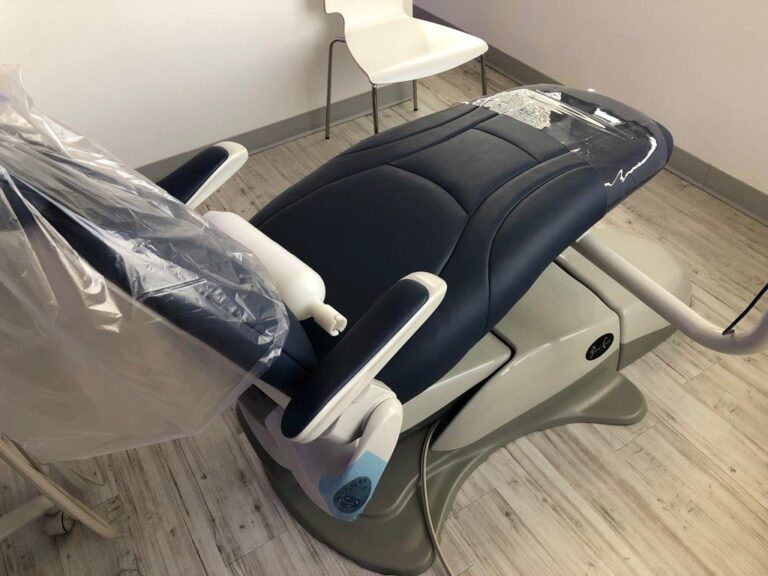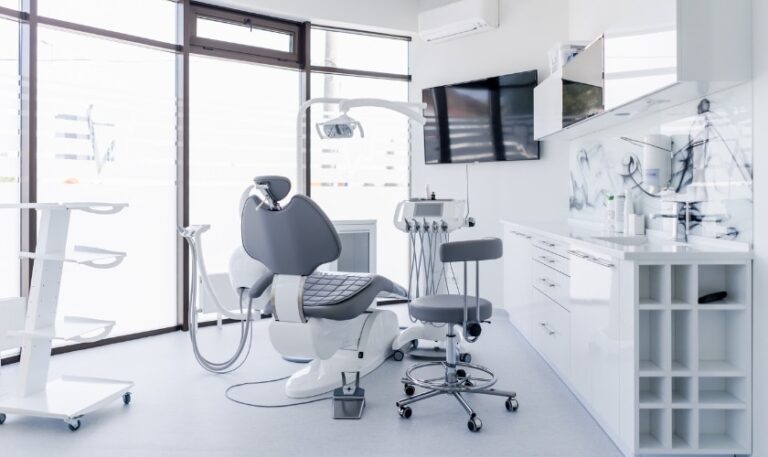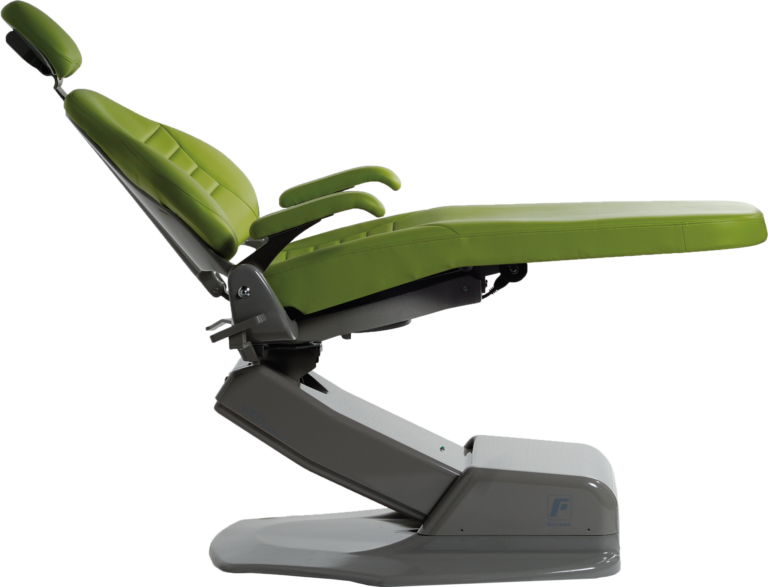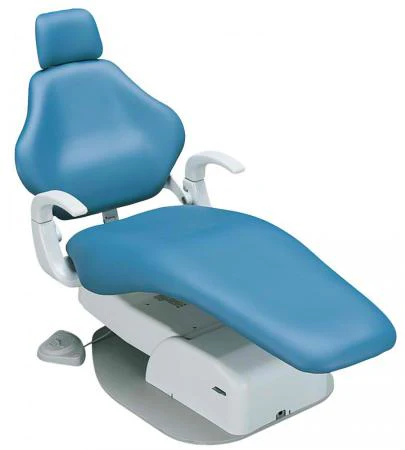As the prevalence of obesity continues to rise, dental practices face a growing need to accommodate patients with higher body weights. Investing in the right bariatric dental chair is crucial for providing comfortable, safe, and effective dental care to this patient population. In this comprehensive guide, we’ll explore the key features to look for when selecting a bariatric dental chair, the factors to consider during the purchasing process, and the latest technological advancements in this field. By the end of this article, you’ll be well-equipped to make an informed decision that will enhance your practice’s ability to serve bariatric patients in 2024 and beyond.
The Importance of Bariatric Dental Chairs
Bariatric dental chairs are specifically designed to accommodate patients with higher body weights, typically those weighing over 300 pounds. These chairs offer several advantages over traditional dental chairs, including:
- Increased weight capacity: Bariatric dental chairs can support weights ranging from 500 to 1,000 pounds, ensuring the safety and comfort of larger patients.
- Wider seat and backrest: The extra width provides ample space for patients to sit comfortably, reducing the risk of discomfort or injury.
- Reinforced construction: Bariatric chairs are built with sturdy materials and reinforced frames to withstand the additional weight and pressure.
- Enhanced accessibility: Many bariatric chairs feature motorized controls and adjustable heights, making it easier for patients to enter and exit the chair.
By investing in a bariatric dental chair, practices can demonstrate their commitment to inclusive care and attract a wider patient base.
Key Features to Look for in a Bariatric Dental Chair
When shopping for a bariatric dental chair, consider the following essential features:
Weight Capacity
Ensure that the chair’s weight capacity aligns with your patient population’s needs. Chairs with higher weight capacities offer more flexibility and can accommodate a broader range of patients.
Seat Width and Comfort
A wider seat, typically 30 inches or more, provides ample space for patients to sit comfortably. Look for chairs with contoured cushioning and ergonomic designs to minimize pressure points and reduce the risk of discomfort during lengthy procedures.
Adjustability
Bariatric dental chairs should offer a wide range of adjustability options, including:
- Headrest: An adjustable headrest supports proper neck and head positioning, reducing strain and fatigue.
- Armrests: Movable or removable armrests facilitate easy patient entry and exit while providing support during procedures.
- Legrest: Adjustable legrests accommodate various patient heights and promote circulation during extended treatments.
- Backrest: A reclining backrest allows for comfortable positioning and improved access to the oral cavity.
Hydraulic or Electric Controls
Chairs with hydraulic or electric controls enable smooth, precise adjustments, enhancing patient comfort and operator efficiency. Look for chairs with user-friendly controls and a wide range of motion to accommodate various treatment needs.
Durability and Maintenance
Invest in a chair with a sturdy, reinforced frame and high-quality upholstery that can withstand the rigors of daily use. Easy-to-clean materials and removable covers simplify maintenance and infection control.
Factors to Consider When Purchasing a Bariatric Dental Chair
In addition to the key features mentioned above, consider the following factors when selecting a bariatric dental chair for your practice:
Space Requirements
Measure your operatory space to ensure that the chair will fit comfortably without compromising workflow or accessibility. Consider the chair’s dimensions, including its height, width, and length, as well as the space needed for movement and additional equipment.
Integration with Existing Equipment
Evaluate how the bariatric chair will integrate with your existing dental equipment, such as delivery systems, lighting, and imaging devices. Ensure compatibility to avoid costly upgrades or replacements.
Budget and Financing Options
Determine your budget for the new chair and explore financing options, such as leasing or installment plans, to make the purchase more manageable. Keep in mind that investing in a high-quality bariatric chair can lead to long-term cost savings by reducing the risk of equipment failure and enhancing patient satisfaction.
Warranty and Service
Look for chairs with comprehensive warranties that cover both parts and labor. Consider the manufacturer’s reputation for customer service and support, as well as the availability of local service technicians for prompt maintenance and repairs.
Technological Advancements in Bariatric Dental Chairs
As dental technology continues to evolve, bariatric chairs are incorporating innovative features to enhance patient comfort, safety, and treatment outcomes. Some of the latest advancements include:
Memory Foam Cushioning
Memory foam cushions conform to the patient’s body shape, providing personalized support and pressure relief. This technology helps to reduce discomfort and fatigue during lengthy procedures.
Integrated Weighing Systems
Some bariatric chairs now feature built-in weighing systems that accurately measure the patient’s weight without the need for a separate scale. This streamlines the check-in process and ensures that the chair’s weight capacity is not exceeded.
Wireless Controls
Wireless control options, such as foot pedals or touchscreens, allow for hands-free adjustments and improved infection control. This technology also enhances operator mobility and reduces the risk of cord-related tripping hazards.
Massage and Heat Functions
Select bariatric chairs offer built-in massage and heat functions to promote relaxation and reduce patient anxiety. These features can be particularly beneficial for patients with mobility issues or those undergoing lengthy treatments.
The Future of Bariatric Dental Care
As the demand for bariatric dental care continues to grow, practices that invest in specialized equipment and training will be well-positioned to meet the needs of this patient population. By staying informed about the latest advancements in bariatric dental chairs and prioritizing patient comfort and safety, dental professionals can build a reputation for providing inclusive, high-quality care.
Looking ahead, we can expect to see further innovations in bariatric dental chair design, such as:
- Smart technology integration: Chairs that sync with patient records and treatment planning software for personalized, data-driven care.
- Improved ergonomics: Designs that prioritize operator comfort and reduce the risk of work-related musculoskeletal disorders.
- Eco-friendly materials: Sustainable, non-toxic upholstery options that align with growing environmental concerns.
- Virtual reality compatibility: Built-in VR headset ports and immersive content to distract and relax patients during procedures.
By embracing these advancements and staying attuned to the evolving needs of bariatric patients, dental practices can remain at the forefront of inclusive, patient-centered care.
Conclusion
Selecting the right bariatric dental chair is a critical investment for practices aiming to provide exceptional care to patients with higher body weights. By prioritizing key features such as weight capacity, comfort, adjustability, and durability, dental professionals can create a welcoming, accommodating environment that promotes patient satisfaction and loyalty.
As you navigate the process of choosing a bariatric dental chair for your practice, remember to consider factors such as space requirements, equipment integration, budget, and warranty coverage. By taking a comprehensive approach and staying informed about the latest technological advancements, you can make a sound investment that will benefit your patients and your practice for years to come.
In the rapidly evolving landscape of bariatric dental care, staying ahead of the curve is essential. By embracing innovative technologies and prioritizing patient comfort and safety, dental practices can establish themselves as leaders in inclusive, high-quality care. With the right bariatric dental chair and a commitment to continuous improvement, you can build a thriving practice that meets the needs of a diverse patient population in 2024 and beyond.
For more information on bariatric dental chairs and inclusive dental care, visit the following reputable websites:
- American Dental Association – Oral Health Topics: Obesity and Oral Health
- Academy of General Dentistry – Treating Obese Patients in the Dental Office
- Centers for Disease Control and Prevention – Adult Obesity Facts
By staying informed and proactive, dental professionals can make a meaningful difference in the lives of bariatric patients and contribute to a healthier, more inclusive future for all.
FAQs
What is a bariatric dental chair?
A bariatric dental chair is a specially designed chair that can safely support higher weight limits, ensuring the safety and comfort of overweight or obese patients during dental procedures.
Why are bariatric dental chairs important?
Bariatric dental chairs are important because they provide equitable and safe dental care for all patients, regardless of their size. They ensure the safety of the patient by supporting higher weight limits and provide comfort through their specially designed features.
What should I consider when choosing a bariatric dental chair?
When choosing a bariatric dental chair, consider its weight capacity, comfort, adjustability, and ease of access for the dental professional.
What is the typical weight limit for a bariatric dental chair?
Bariatric dental chairs are designed to support a higher weight limit, often ranging from 600 to 800 pounds, to safely accommodate bariatric patients.
How does technology improve the safety of bariatric dental chairs?
Technological advancements such as integrated weighing scales, emergency stop buttons, and programmable memory positions enhance the safety and functionality of bariatric dental chairs.
Can bariatric dental chairs be customized for individual practices?
Yes, many manufacturers offer customization options for bariatric dental chairs, including color, upholstery, and additional features to meet specific practice needs.
What should I look for in a bariatric dental chair for my practice?
Key considerations include weight capacity, comfort, adjustability, ease of access, and the integration of technological enhancements that align with your practice’s operations.
Are there specific maintenance requirements for bariatric dental chairs?
Regular maintenance is crucial for the longevity of bariatric dental chairs. This includes checking hydraulic systems, ensuring the structural integrity, and timely reupholstering. For maintenance tips, visit our guide on maintaining dental chair accessories for optimal performance.






